“Philipponnat is known above all for the Clos des Goisses, a 5.5 hectare, south-facing vineyard purchased by Pierre Philipponnat in 1935. Recognizing the qualities of this unusual site he immediately began bottling the Clos des Goisses as a separate, single-vineyard champagne, an unheard-of practice at the time.” Peter Liem
Today we offer Philipponnat’s 2008 ‘Les Cintres’ from lieux dits within the Clos des Goisses and their 2009 ‘La Rémissone’ along with a suit of vintage and NV wines!
Check out all the 🎥 videos from Philipponnat exploring the vintages and wines in the reviews below.
All wines are in stock and ready for immediate delivery.
The Story
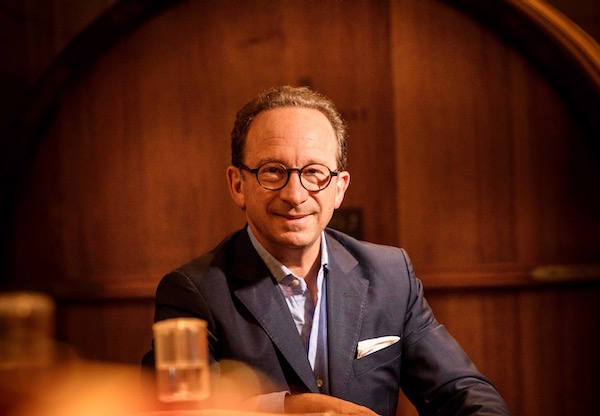
Philipponnat is one of the last houses to be run by a member of its founding family. And Charles Philipponnat is a true Champenois, descended from winemakers, cellarmasters and growers dating back nearly 600 years.
Champagne is in Charles’ blood, which helps to explain Philipponnat’s recent resurgence. Twenty years ago, the house was known largely for one wine: the iconic Clos des Goisses, which in the 1930s became the region’s first important single-vineyard Champagne.
But under Charles, Philipponnat has created a whole portfolio of great wines. These range from two of Champagne’s finest non-vintage bruts—Royale Réserve and Reserve Rosé—to an expanding number of exceptional Champagnes de terroir. And, of course, the offerings culminate in the towering Clos des Goisses. These make for a portfolio that is, as Peter Liem has written, “one of the finest in Champagne.”
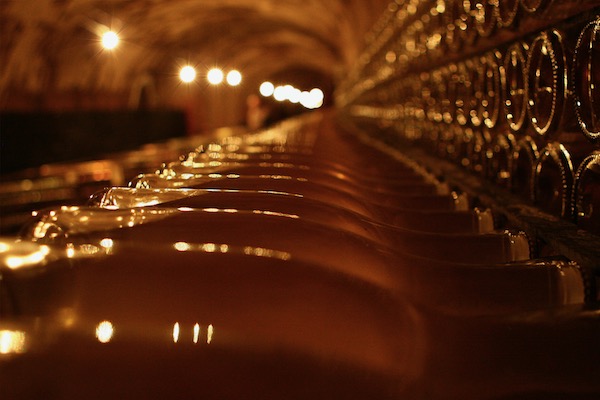
Charles was born to make Champagne. His family grew grapes here as early as 1522, and his father René was chef de caves at Moët from 1949 to 1977—responsible for 1961 Dom Pérignon among other legends.
“This has been one of my favorite Champagne sources for many years.”
Allen Meadows
Since taking over in 1999, Charles has returned Philipponnat to its last Golden Age, 1913-1962, when Louis Boland was chef de caves. Boland’s wines were the essence of Pinot Noir from the house’s vineyards in the Montagne de Reims. Charles’ Champagnes also fully exploit these prized vineyards, and the resulting wines revel in their Pinot-infused glory.
Thoughts on extended lees ageing from:
Wine Decoded’s Chief Wine Hacker, Paul Kaan
For this offer these words are relevant for the 2009 ‘La Rémissonne’ and the 2008 ‘Les Cintres’ made from parcels, Lieux Dits, within the Clos des Goisses.
I made sparkling wine in Australia and Champagne in France. The first time you put 100,000 bottles away for their second fermentation is an experience of elation and trepidation in one. Until that second fermentation is finished you live on the knife’s edge of having stuffed up years of work or created that sparkle we all love!
Then comes the next set of decision: How do I store these bottles? How long do I wait before riddling them? How long will I leave them in contact with the lees (dead yeast from the second ferment)?
Philopponnat’s L.V. range is certainly pushing the envelope. With wines on lees for decades. Producers like Provost prefer absolute minimum time on lees believing the expression of the terroir will be diminished by time on lees. Personally I call what’s in the glass. Some of the most profound experience I’ve had involved Late Disgorged wines.
The pic below left shows champagne Sur Lie with maximum area of lees to wine contact. The pic on the right shows wines that have been shifted to being Sur Pointe (on point) for extend maturation. This shifts the lees into the neck of the bottle reducing the surface area of lees exposed to the wine and slowing the development of autolysis characters from the break down of yeast.
The environment in the bottle with all oxygen consumed by the yeast, 6.5 bar of pressure from a wine saturated with CO2, and, the reductive nature of the yeast lees, keeps the wine fresh. As time passes the wines harmonise, offering more depth of the mid-palate and build additional layers of complexity, the become seamless.
I’ve been lucky enough to bottle several vintages of sparkling wine, I still have magnums from the 1999 vintage on lease, and, uncovered a forget stash of bottles from 1998 just a week ago.
I love hand riddling these and disgorging them to drink immediately without dosage or resealing. The present such incredible freshness and pleasure!
Philipponat by Others
This video series by Philipponat shares a great deal of their past, present & future
As always Levi Dalton provides excellent insights in this interview with Charles
In the Vineyard
Philipponnat’s 20 hectares of vines, situated at the heart of the Champagne wine-growing area in Aÿ, Mareuil-sur-Aÿ and Avenay, are classified Premier and Grand Cru. Philipponat works to preserve these precious and fragile, centuries-old terroirs, by using natural methods to work the soil, hoeing by hand and ploughing with horses. THe Hous has found the best possible way to renew its traditions while perpetuating the best they have to offer. Emphasis is pout on conservation and meeting challenges to unceasingly improve the quality of the wines.
Clos des Goisses is a parcel of 11 Lieux Dits. Gois or Goisse meaning very steep gives us the first clue to the site. Yes it is very steep running at 45º. Facing due south the pure chalk slope receives sun for the full day. The warmth of the Clos des Goisses typically offers higher potential alcohol for the fruit, and, powerfull intense wines.
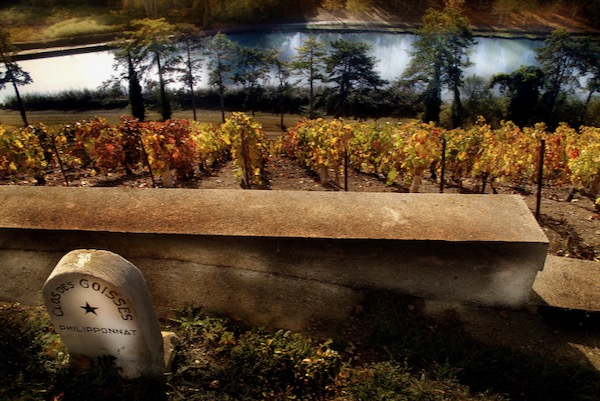
In the Winery
Where in the World is Philipponnat?
Philipponnat, has vineyards in Aÿ, Mareuil-sur-Aÿ and Avenay.
The map below shows the main sub-regions of Champagne
Click to enlarge🔎
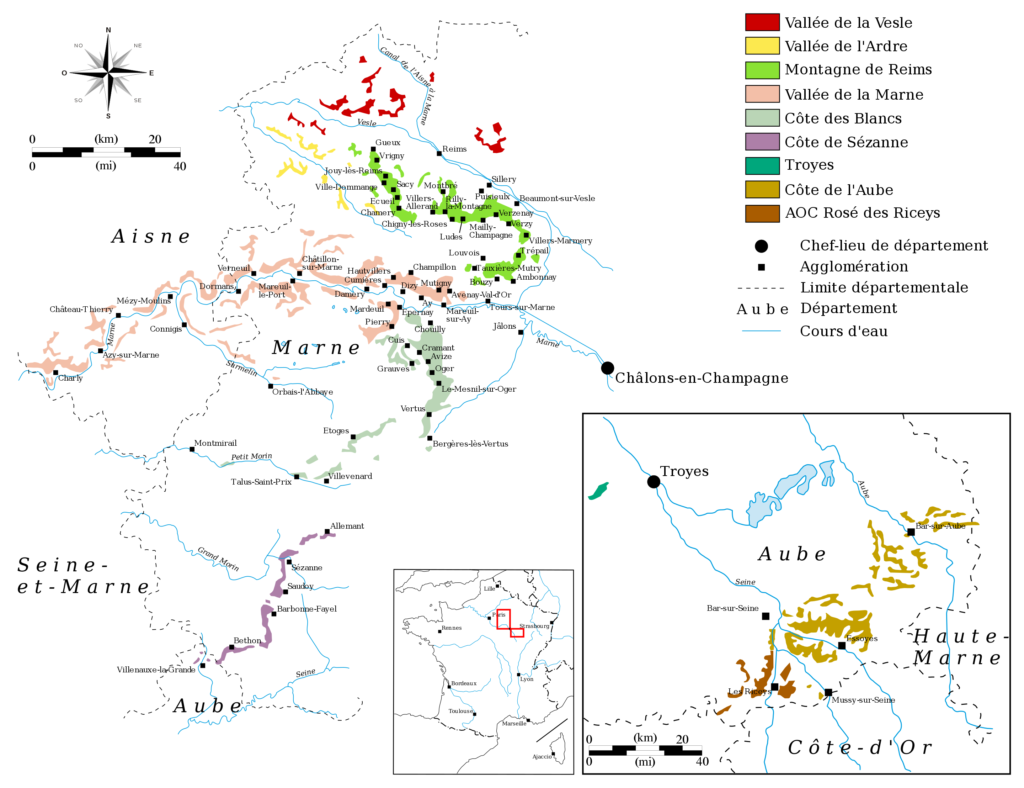
From left to right Champagne vineyards by Soil Type, Aspect and Dominant Varietal
Click on a map to enlarge🔎
Want More?
For an in-depth history of the vineyard and its wines, along with a summary of the wine growing and winemaking, please see the link below.
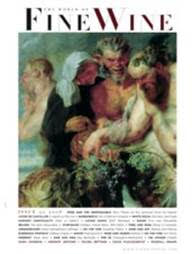 World of Fine Wine Goisses June 2008
World of Fine Wine Goisses June 2008
About the Wines
Philipponnat Royale Reserve NV
The Blend
65% Pinot Noir, 30% Chardonnay, 5% Pinot Meunier. First press juice of mainly Grand and Premier Crus grapes from the heart of the Champagne wine-growing area. 20 to 30% of reserve wines are aged in wooden barrels using the solera system to incorporate older wines without losing freshness.
Vinification
Vinified using traditional methods to avoid premature oxidation. Partial malolactic fermentation and reserve wines aged in casks to allow the aromas to develop complexity. Moderate dosage (8 g/litre) to maintain a balance between freshness, fruitiness and vinosity without masking the wine’s character and purity.
Ageing
Aged on the lees in the House’s cellars at a constant temperature of 12°C for three years, far longer than the legal minimum requirement of 15 months.
Disgorged in June 2020 with eight grams per liter dosage, the latest release of Philipponnat's NV Brut Royale Réserve is based on the 2016 vintage, with 27% reserve wines. Offering up aromas of peach, pear and plum mingled with apple blossom and sweet pastry, it's medium to full-bodied, fleshy and expressive, with a pillowy mousse and a generous core of fruit, underpinned by bright acids.
Philipponnat Royale Reserve Rose NV
The Blend
75% Pinot Noir, 20% Chardonnay, 5% Pinot Meunier. First press juice of mainly Grand and Premier Crus grapes from the heart of the Champagne wine-growing area. Reserve wines (25 to 30% of the blend) are aged in wooden barrels using the solera system to incorporate older wines without losing freshness.
Vinification
Vinified using traditional methods to avoid premature oxidation. Partial malolactic fermentation and some of the wines aged in casks to allow the aromas to develop complexity. Still red wine made from Pinot Noir grapes from Mareuil-sur-Ay and Riceys is obtained by maceration and 7 to 8% is added to obtain a delicately coloured rosé with a very definite fruity taste. Moderate brut dosage (9 g/litre) to maintain a balance between freshness, fruitiness and vinosity without masking the wine’s character and purity.
Disgorged in February 2020 with nine grams per liter dosage, the NV Brut Rosé Royale Réserve wafts from the glass with aromas of raspberries, strawberries, peach, white flowers, blanched almonds and pastry cream. Medium to full-bodied, fleshy and insipid, with a gently phenolic grip and a racy spine of acidity, like these other new Royale Réserve cuvées it's based on the 2016 vintage.
2012 Philipponnat Cuvee 1522
In 2000, Charles created Cuvée 1522, conceived as a blend of top vineyards representing the soul of the house. Its name commemorates the year that Charles’ family became growers in Aÿ and showcases the Pinot Noir from one of the village’s most-prized vineyards, Le Léon.
This sun-drenched site has, for centuries, produced great Pinot Noir. But, for this prestige cuvée—and, based on his experience making Clos des Goisses—Charles believed that an even greater wine would be made by marrying the richness of approximately 60% Pinot Noir from Le Léon with the minerality of 40% Chardonnay from great Côte des Blancs terroirs. Its profound richness and complexity have quickly placed Cuvée 1522 among Champagne’s elite tête de cuvées.
The Blend
Exclusively Grands Crus. 70% Pinot Noir and 30% Chardonnay. The Pinot Noir comes from our vineyard at “Le Léon” in Ay, and in Mailly, and the Chardonnay from Verzy.
Vinification
A portion of the wines are vinified in wooden barrels without malolactic fermentation to preserve the wine’s freshness, allowing it to develop complexity. Both ample and tangy, this cuvée is eminently suitable for low dosage, extra brut, with only 4.25 g/litre, which is just one third of the conventional dosage for a brut champagne.
Disgorged in February 2020 with 4.5 grams per liter dosage, the 2012 Extra-Brut Grand Cru Cuvée 1522 is already showing beautifully, unwinding in the glass with hints of golden orchard fruit, fresh peach, honeycomb and blanched almonds. Full-bodied, vinous and concentrated, it's elegantly muscular, with terrific depth at the core, racy acids and a seamless profile. Given its very recent disgorgement, it's surprisingly open, but it will nonetheless reward bottle age.
The 2012 Extra-Brut Cuvée 1522 is creamy, rich and expansive, with striking resonance that builds with time in the glass. Baked apple tart, spice and warm toasty notes are front and center. The 2010 is not super-complex, but it is flat-out delicious, and a real pleasure to taste. Dosage is 4.5 grams per liter.
2010 Philipponnat Grand Blanc
Grand Blanc, blended exclusively from Chardonnay grapes, is a remarkable exception in Philipponnat’s range of wines, the House’s hallmark being the Pinot Noir grape. This is a unique opportunity to discover another facet of the House’s style in the shape of a fine, moderately dosed blanc de blancs.
A word from the Cellar Master 2010 : A year of contrasts with promising early ripening. Subsequent torrential rain in mid-August compelled us to sort the grapes meticulously in order to obtain a high-quality harvest that maintained potential for aroma and flavour. At Philipponnat the harvest took place from 15 to 28 September. Partial vinification in wooden barrels without malolactic fermentation allowed us to preserve the freshness and provide structure, in order to balance the fruit and the vinosity, and to retain good minerality.
The Blend
100% Chardonnay from Côte des Blancs and the village of Verzy. First press juice from exclusively Premier and Grand Cru plots.
Vinification
Vinified using traditional methods to avoid premature oxidation. Partial malolactic fermentation for the wines in vats and vinification without malolactic fermentation for the wines in wooden barrels. An elegant wine that preserves a balance between freshness, floral aromas and vinosity. “Extra-brut” dosage (4.25 g/litre) to preserve its original purity and distinction.
Ageing
Aged for seven to nine years in the cellars of the House at a constant temperature of 12°C to develop maximum complexity and to highlight the wine’s secondary and tertiary aromas, which are the hallmark of extended ageing on lees.
Aromas of citrus oil, buttered toast, fresh apricot, orange confit and musky peach introduce the 2010 Extra Brut Grand Blanc, a medium to full-bodied, fleshy and charming wine that's round and gourmand, with ripe acids and a sapid finish. It was disgorged in April 2020 with 4.5 grams per liter dosage. Given its generous style, this is a vintage that will drink quite well young.
2008 Philipponnat Les Cintres (wooden box)
Charles’ exploration of Philipponnat’s extraordinary Montagne de Reims Pinot Noir holdings has resulted in three site-specific cuvées of pure Pinot Noir: Le Léon; Mareuil-sur-Aÿ, sourced from two lieux-dits above Clos des Goisses; and Les Cintres, from the warmest plot in the heart of Clos des Goisses. Made in painfully small quantities, with flexible use of fermentation in barrel and long aging en tirage, each is among the region’s most profoundly exciting wines.
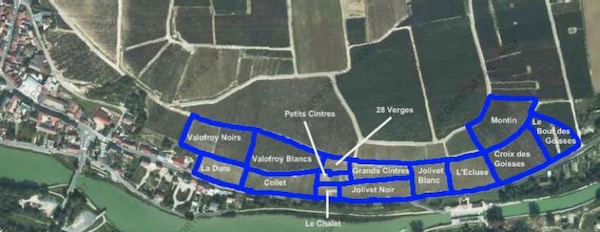
The Blend
100% Pinots Noirs. 100% first-press juice from the central plots « Les Grands Cintres » and « Les Petits Cintres » in Clos des Goisses, Mareuil-sur-Ay.
Vinification
Vinified using traditional methods to avoid premature oxidation, with no malolactic fermentation. All the wines are fermented in casks. “Extra-brut” dosage (4.5 g/litre) to maintain a balance between freshness and vinosity without masking the wine’s character and purity.
Ageing
Aged for more than nine years in the House’s cellars at a constant temperature of 12°C to develop maximum complexity and to highlight the wine’s secondary and tertiary aromas, which are the hallmark of extended aging on lees.
Fermented and aged in 100% new oak (with no malolactic fermentation), Philipponnat's 2008 Les Cintres Extra Brut is one of three younger single-plot cuvées. The 2008 is just the second vintage, after 2006. Sourced from the central plots Les Grands Cintres and Les Petits Cintres inside the steep, south-facing part of the Clos des Goisses, Mareuil-sur-Aÿ, the 2008 opens with pure, iodine, earthy (turf) and tobacco flavors along with smoky notes. On the palate, this is a pure, round, highly elegant and refined but complex and powerful Pinot Noir with a long, tensioned, very mineral, endless salty finish. Aged for more than nine years in the House’s cellars at a constant temperature of 12 degrees Celsius, this is a fascinating wine with great aging potential! Just 2,198 bottles made. Disgorged in September 2017. Tasted April 2018.
Philipponnat's 2008 Les Cintres, 100% Pinot Noir from the most exposed, ripest portion of Clos des Goisses, is just as impressive as it was last year. Creamy, rich and expressive, with stunning depth, the 2008 hits all the right notes. Brioche, baked apple, apricot and a kiss of new French oak are all amped up in this beautifully exotic, totally alluring Champagne. Time in the glass simply allows the wine to grow into its ample frame. The Cintres has a bit more new oak than most of the Philipponnat Champagnes, but that should not be an issue over time. Today, it is flat out stunner.
2009 Philipponnat Le Remissonne (wooden box)
La Rémissonne, a Premier Cru plot adjacent to the Clos des Goisses in Mareuil-sur-Aÿ, produces a superb cuvée crafted exclusively from Pinot Noir. An extra-brut dosage preserves its purity and perfect balace between freshness and vinosity. The 2,590 bottles of the 2009 vintage – th first harvest for this cuvée – express wonderful notes of raspberry, violet, vanilla and cocoa been chips, with a long, rich finish.
The Blend
100% Pinot Noir from our plot “La Rémissonne” in Mareuil-sur-Ay, the House’s centuries-old terroir. First press juice, exclusively from Premier Cru grapes from the heart of the Champagne vine-growing area.
Vinification
Vinified using traditional methods to avoid premature oxidation. Vinification without malolactic fermentation. All the wines are fermented in casks. “Extra-brut” dosage (4.5 g/litre) to maintain a balance between freshness and vinosity without masking the wine’s character and purity.
From a lieu-dit that's just beyond the Clos des Goisses and richer in clay, located direct behind the winery, comes the 2009 Extra Brut Blanc de Noirs La Rémissonne. This was a trial disgorgement without dosage from March 2019, and the commercial disgorgement will likely see a few grams of added sugar. Revealing aromas of waxy yellow orchard fruit, warm bread, hazelnuts, clear honey and yeast extract, it's full-bodied, layered and concentrated, with ample reserves of fine-boned structuring dry extract and a long, chalky finish. It will be well worth seeking out once it's released.
The 2009 Mareuil-sur-Aÿ La Remissonne is a new wine in the range from a parcel just to the west of Clos des Goisses. Dense, creamy and expansive on the palate, La Remissonne brings together distinctly bright, citrus-infused, floral aromatics to play off a core of rich, textured Pinot fruit. I tasted the 2009 a day after it was disgorged, and yet the wine showed tremendous character as well as plenty of potential. La Remissonne offers a more strict, focused expression than Clos des Goisses and the new Les Cintres bottling. Dosage is 4.25 grams per liter. Disgorged: July 2, 2019.
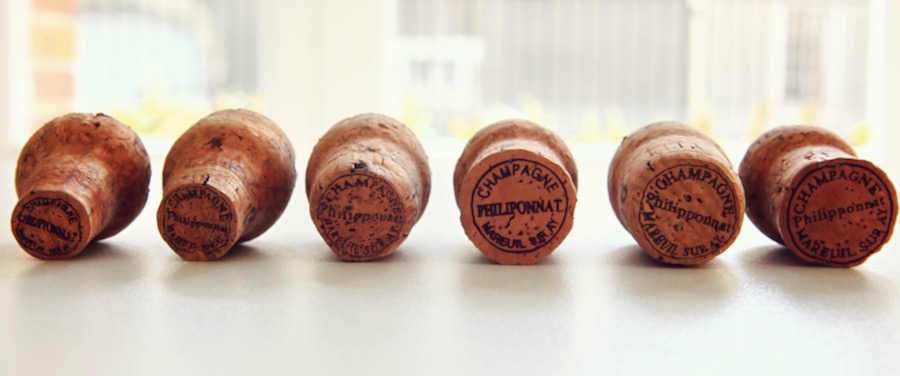





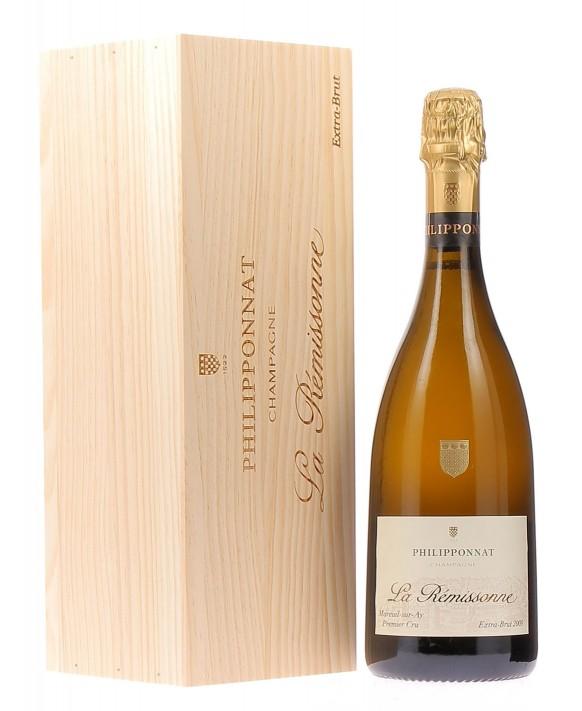
You must be logged in to post a comment.